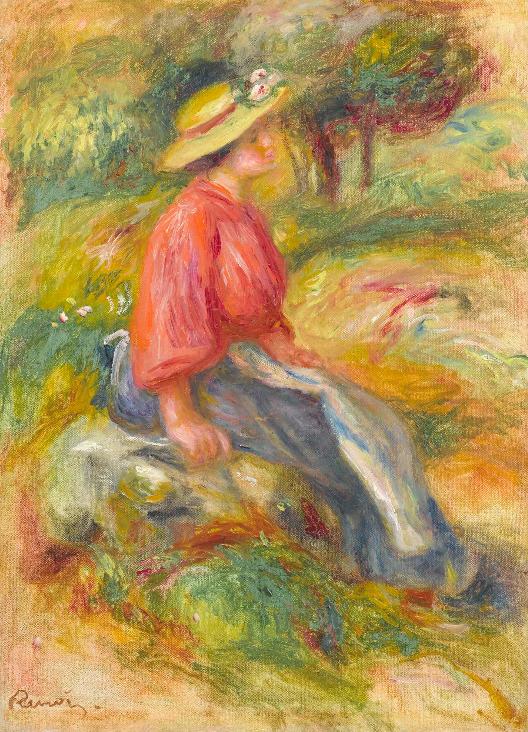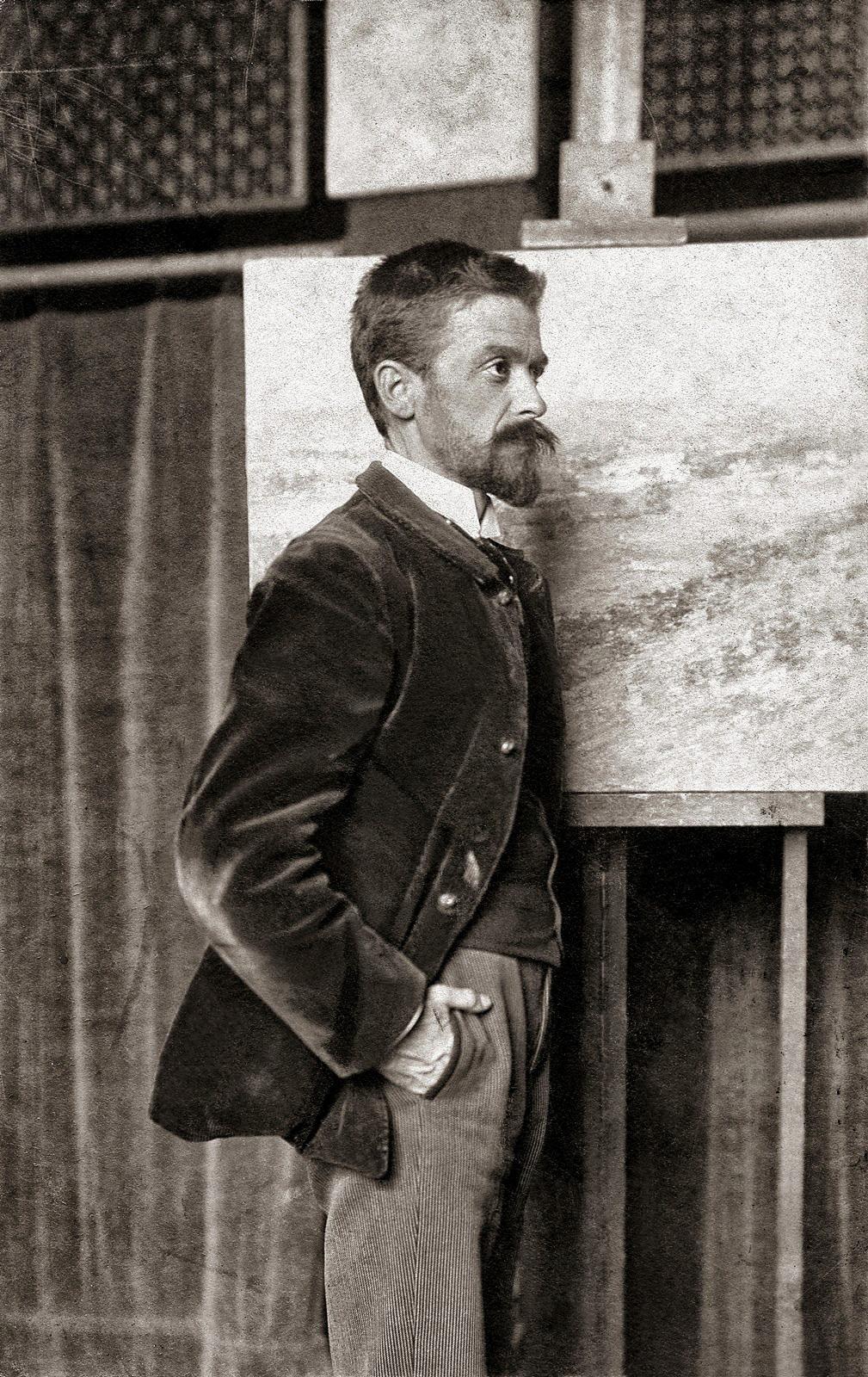Le Repos
Pierre-Auguste Renoir
Description
Around 1900
Oil on canvas
Signed lower left: Renoir
"Le Repos" - what a fitting title for this painting by Renoir, which is in so many ways characteristic.
And not just because we see a woman sitting on a stone to rest, letting her gaze gently wander to the side, far outside the frame of the work. The work's entire appearance, its subject, composition and coloring, and also its format, has an almost calming effect, which is quite typical of Renoir's painting. The present work combines many elements that are always recurring in the painter's work. On the one hand, the typical palette is striking.
Renoir uses intense, warm colors here, and above all there is an interplay of intense red, green and yellow tones that is characteristic of his paintings. It is quite conceivable that the scene depicted takes place in the south of France, where the painter increasingly went from 1899 onwards in order to alleviate his rheumatism, which was getting worse from then on. The brushwork is both hasty and diffuse, but in the interaction of the composition it creates an almost harmonious and figurative landscape scene. This is also a testament to his phase at the turn of the century when he moved from impressionism to classicism, which saw his style undergo another decisive change. This is often referred to as Renoir's "Ingres period". He no longer wanted to be considered exclusively an impressionist and, in a return to classical painting, increasingly sought to implement Arcadian themes with classical precision, but without completely abandoning his impressionistic style. John House describes this style quite appropriately, as well as in the present painting: “His color schemes began to grow warmer and his touch more mobile. Soft varied nuances were threaded through his figures, and his backgrounds began to be treated, at times, with a more emphatic touch, which draws them into an active relationship with the main subject.” (John House, Renoir, exhibition catalog, Hayward Gallery, London, 1985, p. 204.) It is also fascinating that Renoir allegedly did not force the models to sit still. Vollard reports in connection with his session for his portrait: “In contrast to Cézanne, who demanded immobility and silence from his models, Renoir allowed conversation and movement. He sometimes sent models away because he found them too immobile for his taste.” (Ambroise Vollard, Auguste Renoir, Berlin 1941, p. 193.). As we learn from numerous reports, Renoir was able to paint very quickly. His approach can be imagined as being that he captured impressions in his memory without having to rely on a static template and, within a short time, conjured up a resulting overlay on the canvas from these memorized images.
About the artist
Renoir's paintings are notable for their vibrant light and saturated color, most often focusing on people in intimate and candid compositions. The female nude was one of his primary subjects.


